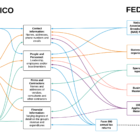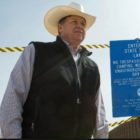2019 legislative session
Early childhood department has governor’s backing
|
A child plays with beads in a New Mexico PreK classroom. A proposal for an Early Childhood Education and Care Department would bring together all children’s program for children ages 0 to 5 into the department, including New Mexico PreK administered both the Public Education Department and the Children Youth and Families Department. (Xchelzin Pena/New Mexico In Depth)
It was a powerhouse show of support last week for a plan to create an Early Childhood Education and Care Department. “Any other Cabinet secretaries here?,” Sen. Jeff Steinborn, D-Las Cruces, asked during public comment Feb. 13 on Senate Bill 22, which would create a department focused on providing education and services for children from birth to age 5.









